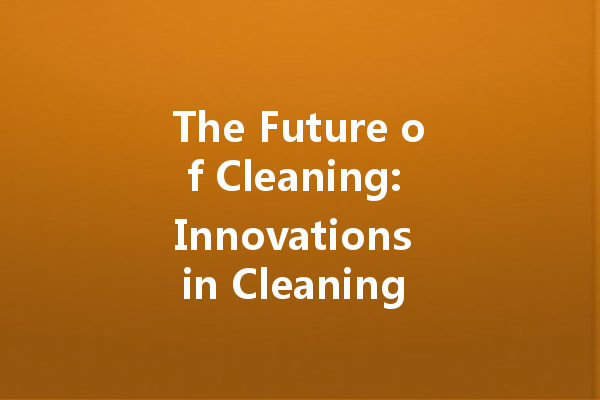Cleaning agents play a crucial role in maintaining hygiene and cleanliness in our homes, workplaces, and public spaces. As the demand for effective and eco-friendly cleaning solutions continues to rise, the manufacturing processes and the ingredients used in cleaning agents are evolving. This article explores the innovative trends shaping the future of cleaning agent manufacturing.
The Shift Towards Eco-Friendly Products
Consumer Demands
Today’s consumers are increasingly aware of the environmental and health implications of the products they use. From reducing plastic waste to opting for biodegradable ingredients, consumers are pushing manufacturers to prioritize sustainability. This trend is leading to the development of eco-friendly cleaning agents that minimize harmful impacts on the environment while remaining effective.
Biodegradable Formulations
Biodegradable cleaning agents break down naturally and do not contribute to environmental pollution. Manufacturers are now investing in research to formulate products using plant-based ingredients and natural surfactants. This transition not only meets consumer demand but also helps companies enhance their brand reputation by showcasing their commitment to sustainability.
Technological Advancements in Manufacturing
Automation and Efficiency
The cleaning agent manufacturing industry is experiencing a technological transformation. Automated processes are streamlining production, improving efficiency, and ensuring consistent product quality. Robotics and AI technologies are being integrated into manufacturing lines, enabling companies to minimize errors and reduce labor costs.
Innovative Ingredient Discovery
Advancements in technology are also facilitating the discovery of new, effective cleaning agents. Manufacturers are leveraging data analytics and machine learning to identify the most effective and environmentally safe ingredients. This innovation is rapidly evolving the cleaning industry, enabling companies to develop products that provide superior cleaning power while remaining eco-conscious.
The Rise of Smart Cleaning Agents
Responding to Modern Needs
The demand for convenience in everyday tasks has spurred innovation in smart cleaning agents. These products incorporate technology that enhances their effectiveness. Examples include self-dispensing cleaners and multi-purpose solutions that adapt based on the surface requiring cleaning. This innovation aligns with the fast-paced lifestyles of consumers who seek efficiency without compromising cleanliness.
Integrating Nanotechnology
Nanotechnology is revolutionizing the cleaning agent industry by creating more efficient formulations. Nano-sized particles can enhance the ability of cleaning agents to penetrate surfaces, ensuring deeper cleans with less product. This means that smart cleaning agents can provide powerful cleaning results while using fewer resources, appealing to both environmentally conscious consumers and cost-conscious businesses.
Health and Safety Considerations

Non-Toxic Ingredients
As awareness of health-related issues rises, manufacturers are moving towards creating non-toxic cleaning agents. Products free from harmful chemicals, allergens, and irritants are gaining popularity among consumers who prioritize health and safety. This trend is especially significant for households with children and pets, leading companies to develop safer alternatives that do not compromise cleaning efficacy.
Regulation and Compliance
Regulatory agencies are increasingly scrutinizing cleaning product formulations. Manufacturers must stay informed of evolving regulations regarding harmful substances, pushing them to innovate responsibly. This fosters transparency and accountability within the industry, ensuring that consumers are better informed about the products they use.
Customization for Diverse Needs
Tailored Solutions
As consumers become more discerning, manufacturers are exploring custom formulations. Personalized cleaning agents designed to address specific needs or preferences—from scent to efficacy in specific environments—are on the rise. This custom approach allows brands to cater to niche markets, offering tailored solutions that enhance the consumer’s cleaning experience.
Engaging with Consumers
Manufacturers are shifting their focus towards consumer engagement, seeking feedback and insights into what users want from their products. This two-way communication helps brands develop better products that match consumer needs while fostering brand loyalty.
The Impact of Digital Marketing
Brand Transparency
Digital marketing plays a significant role in promoting the innovations in cleaning agent manufacturing. Consumers now have access to product reviews, ingredient disclosures, and performance comparisons. Transparent communication about the sustainability and safety of products allows consumers to make informed purchasing decisions.
E-commerce Growth
The rise of e-commerce has changed how cleaning agents are marketed and sold. Manufacturers are leveraging online platforms to reach broader audiences, allowing consumers to easily access detailed information about innovative products and their benefits. This shift is key to expanding market reach and enhancing brand visibility.
Conclusion
The future of cleaning agent manufacturing is bright, driven by technological advancements, consumer demands for sustainability, and an increased emphasis on health and safety. As manufacturers continue to innovate, we can expect to see more eco-friendly, effective, and safe cleaning solutions entering the market. These changes will not only enhance cleanliness in our environments but also contribute to a healthier planet. Embracing these innovations will ensure that the cleaning agent industry keeps pace with the evolving needs of consumers while prioritizing the well-being of both users and the environment.
